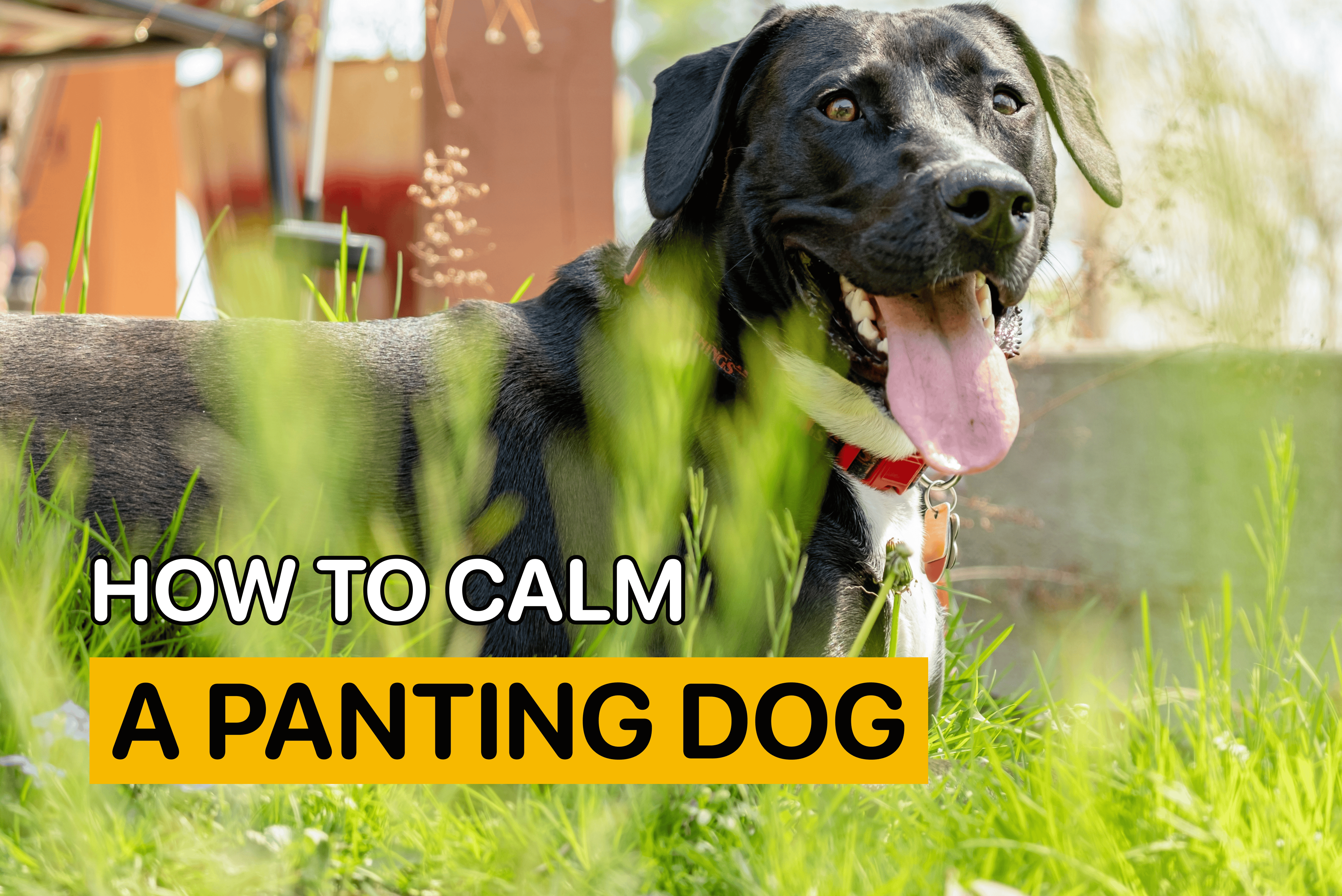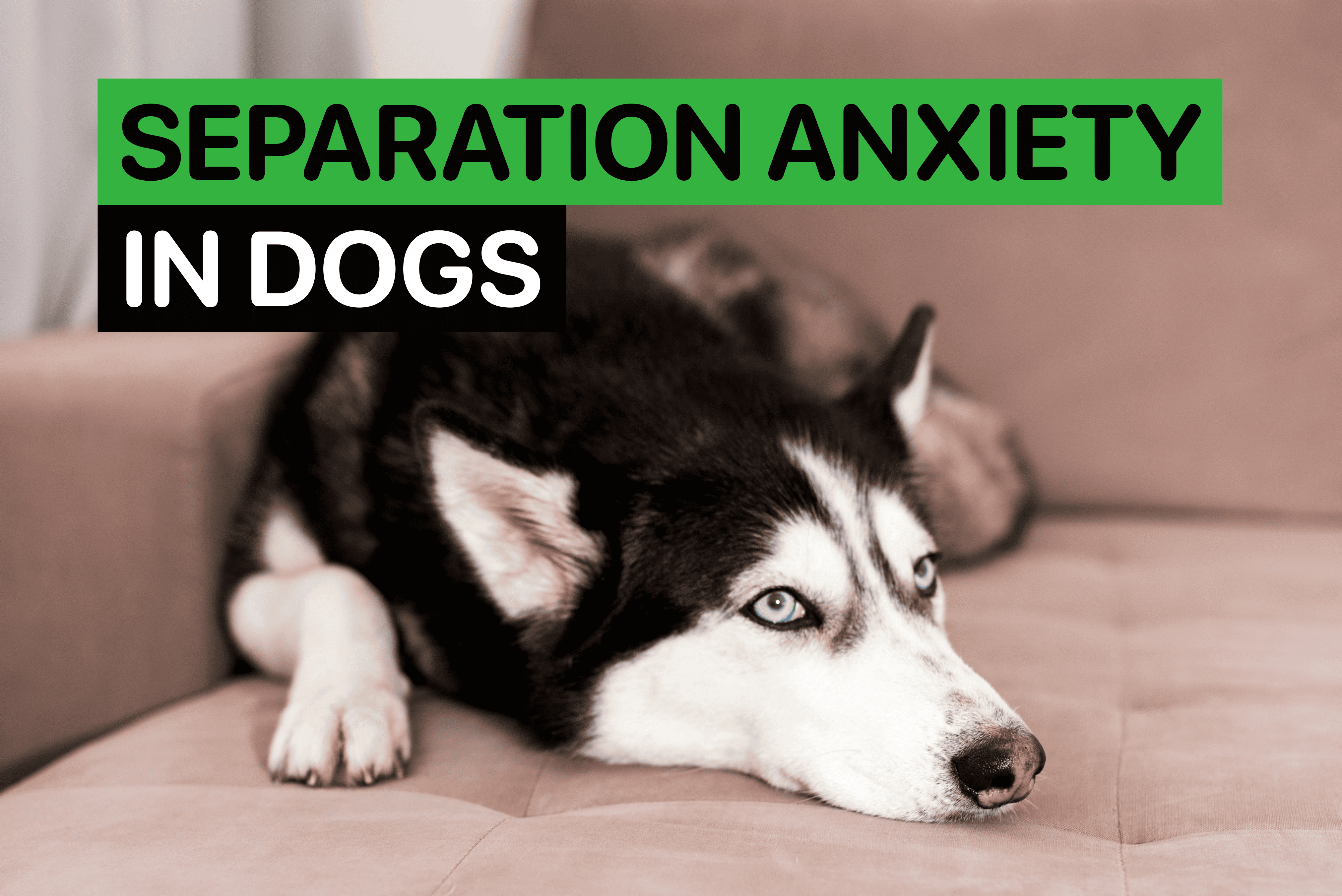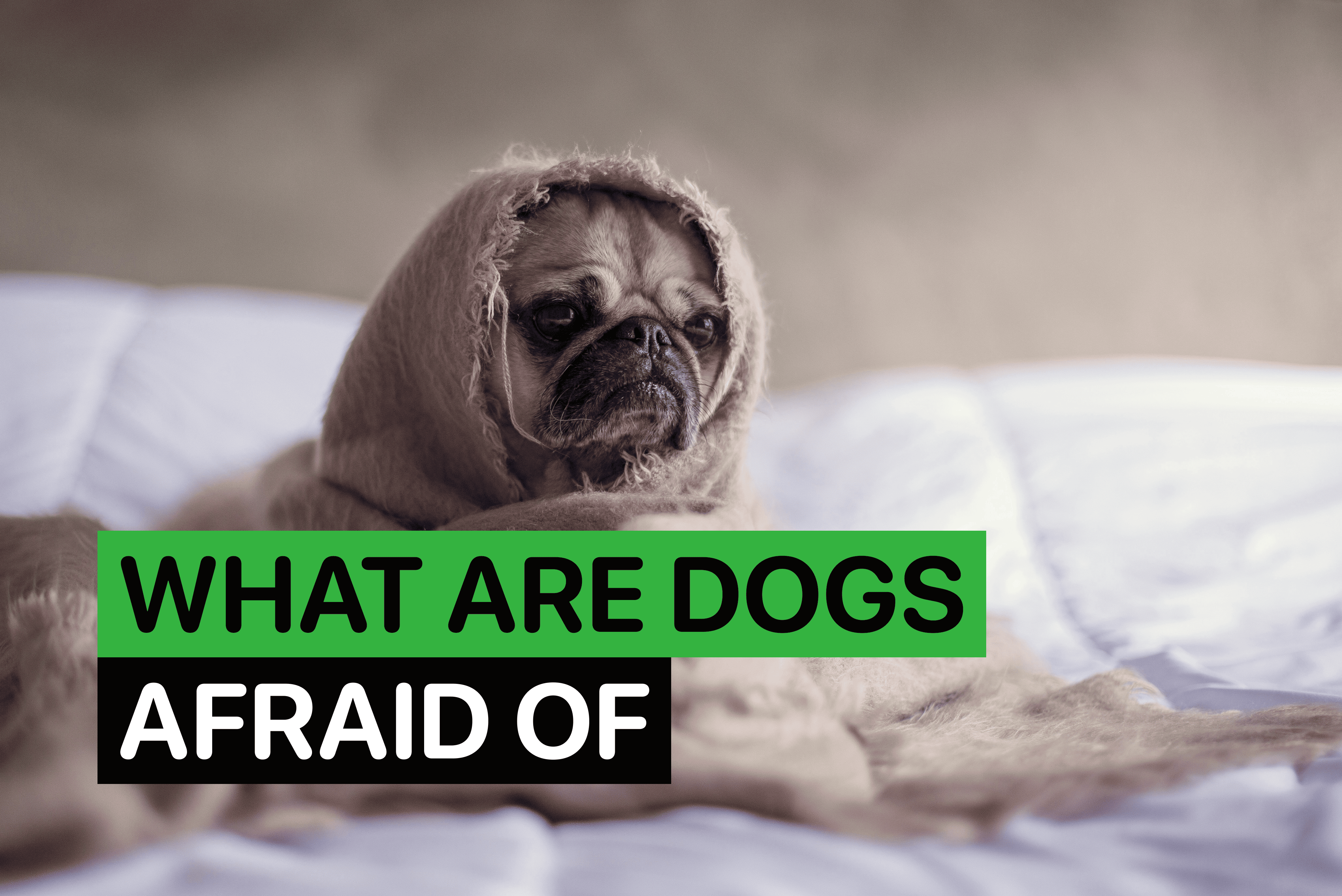How to Help a Dog With Anxiety in 6 Ways

By
Woofz Team Updated on |Reviewed by Annie-Mae Levy
If you’ve ever dealt with an anxious dog, you know firsthand how stressful it is for both parties when dogs experience anxiety. Compulsive behaviors, signs of separation anxiety, and sensitivity to loud noise are some of the most common indicators that your pet is dealing with anxiety.
Dog anxiety makes it extremely difficult to manage your pooch. Anxious pets have difficulty responding to cues, may destroy furniture in your house, or bark at strangers. Unless addressed properly, it can decrease the quality of life for the pet parent as well.
Did you know that 16% of pooches get anxious around strangers?
Is there anything you can do to help your dog cope with being overwhelmed? We’ve prepared the top 7 tips for calming an anxious dog and tricks to relieve stress. We’ll help you identify the potential causes of anxiety in your dog, the common signs of the condition, and teach you how to reduce anxiety in dogs.
Dogs and humans experience many of the same emotions. But it’s not always easy for pet parents to understand their furry companions. Want to know more about what your dog is thinking?
Understanding Anxiety in Dogs
Anxiety causes your pet to experience periods of uneasiness and nervousness. These feelings can manifest as barking, whining, shivering, and excessive sniffing or scanning the environment. Some pups even become aggressive or show destructive behavior.
Remember, it’s essential to address the issue at the roots if your furry friend stays anxious over prolonged periods. Untreated chronic anxiety in dogs can lead to constant irritability, depression, loss of appetite, loss of interest in social interaction, and even agression. In the long run, it can decrease your pet’s resilience to allergies and other health issues.
If you’re looking for practical solutions for calming your pup down, you must determine what causes your pet’s anxiety. Pinpointing why your canine companion is dealing with nervousness will help you effectively treat the anxiety.
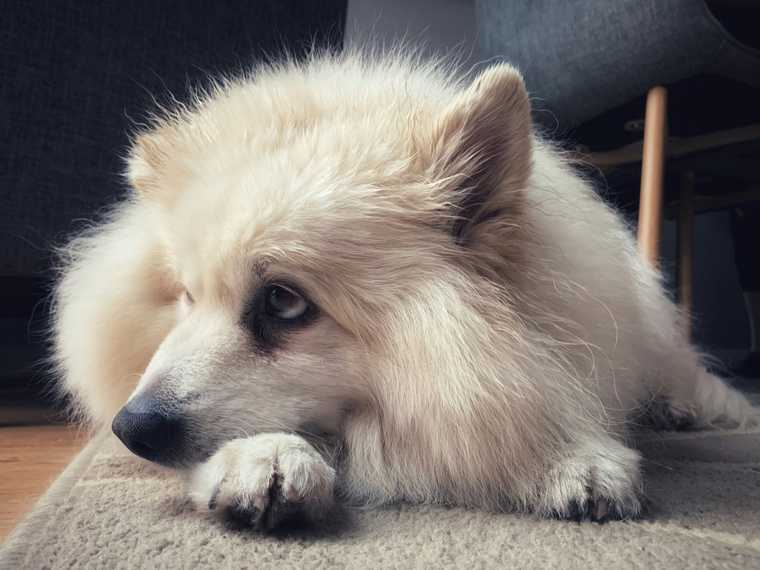
What Can Cause Anxiety in Dogs?
There are several reasons why your dog may be anxious. If you’re asking yourself how to calm an anxious pet, you need to identify the underlying issues and possible causes first. Here are some of the potential causes of anxiety in dogs.
Your furry friend is scared
It’s common for canines to develop specific fears and phobias, such as the fear of sudden, loud, scary noises or unfamiliar people. Various body reactions, mainly trembling and pacing, can indicate fear in dogs. Some scared canines might even try to escape and run away.
Separation anxiety
Canines, like their wolf ancestors, are pack animals. Since they treat humans as members of their pack, your absence may trigger a feeling of anxiety. Pups suffering from separation anxiety often demonstrate destructive behaviors or are prone to barking and howling.

Changes in the environment
If you own a furry friend, you’ve probably noticed that your companion is a creature of habit. Predictable daily routines are essential for your pet’s emotional well-being. If your doggo's habits are disrupted, for example, by moving to a new location (if you take a dog from a shelter) or changing their schedule, they may start experiencing anxiety.
Genetic makeup
Some breeds are more prone to anxiety than others. Some of the most popular breeds, including German Shepherds, Labrador Retrievers, Border Collies, and Jack Russell Terriers, are prone to stress and excessive nervousness.
If you’re interested in such breeds, consider the challenges you might face. A profound understanding of these tendencies can help you better support them, help them to overcome this issue, and ensure their optimal quality of life.
Your companion is getting older
Pet owners caring for a senior dog may have to deal with specific issues triggered by the aging process. Thus, older canines are more susceptible to anxiety and sometimes develop Cognitive Dysfunction Syndrome (CDS). This condition may cause disorientation, confusion, fear, and/or phobias in your senior furry pal.
How to Tell if Your Dog Is Suffering From Anxiety?
Many pet parents want to know how to calm a hyper pup. But are the behaviors you observe clear signs of anxiety? Or is it just your dog’s goofy personality? It’s not always easy to tell. The rule of thumb is to pay attention to the frequency of the symptoms. If your dog adopts recurrent behavior patterns, those may be signs of an anxious condition.
Here are some of the symptoms you should look out for if you suspect your dog is suffering from anxiety:
- Destructive behaviors (chewing, scratching the furniture)
- Excessive vocalization (barking, howling, whining)
- Drooling
- Trembling
- Restlessness and compulsive behaviors
- Hiding
- Attempts to escape
- Tail-tucking
Ways to Calm an Anxious Dog
The earlier you start intervention to treat your dog’s anxiety, the easier it is to help your pet overcome the issue. Let’s explore some proven and practical techniques for tackling anxiety in dogs.
1. Exercise your dog regularly
How can you calm a hyper dog? Physical exercise is an effective method to relieve stress and boost your fluffy friend’s endorphin level. In addition, exercising and playing with your dog gives owners a chance to strengthen the bond with their pets. Mental exercise is also important for your dog, as licking and chewing can help calm them.
Anxious dogs often become hyperactive and show increased energy levels. Walking with your dog, playing together, and engaging in various indoor and outdoor activities can benefit anxious dogs.
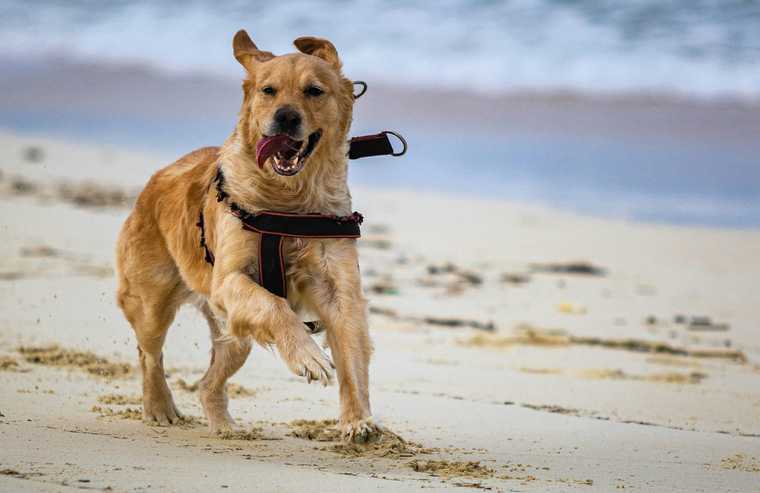
2. Use audio therapy
Implementing music therapy or switching on white noise can help your pup become more relaxed. Recent studies have shown that classical music, reggae, and soft rock have the most calming effect on dogs. Try to avoid music with deep bass or clashing sounds, as they can remind dogs of thunder.
Music and white noise therapies can benefit pets scared of sudden outside noises. Remember that dogs’ ears are way more sensitive to sounds than humans, so keep the volume down to avoid overstimulation.
Learn more about relaxation techniques covered in the Wellbeing module of the Woofz app.
3. Establish consistent routines
One way to calm a pup down is to create a daily activity schedule – dogs long for structure, predictable feeding times, playtime, and sleep routines. Staying consistent helps to avoid confusion and stress not only for pets but also for their owners.
4. Provide opportunities for physical contact
Like humans, physical contact has a soothing effect on canines. Activities like petting, cuddling, or picking up your dog can help them become calmer. You can also give your dog massage sessions to alleviate muscle tension.
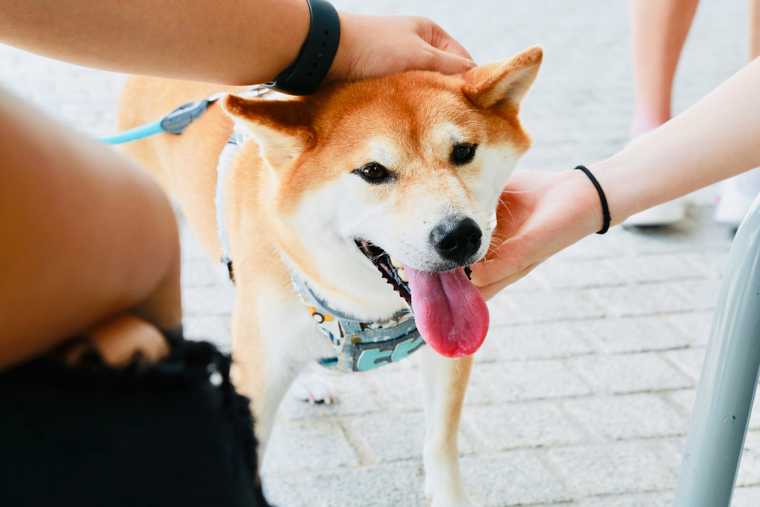
5. Practice time-outs
Anxiety can cause behavior problems, but you must never punish your companion for them. However, your furry pal can benefit from time-outs, which allow dogs to calm down independently. This is not a punishment, just provide your pet with a safe and isolated place to retreat to for relaxation.
Remember, every dog has a unique personality, so what helps one canine can be irritating to another. For example, many dogs benefit from crate training because they will start treating the crate as their safe spot. Meanwhile, some dogs can begin to panic when confined to a closed space. It’s essential to approach each dog’s anxiety symptoms individually.
6. Introduce calming wearables
Based on anecdotal evidence, putting calming coats and T-shirts on your pup has a calming effect. How do body wraps work?
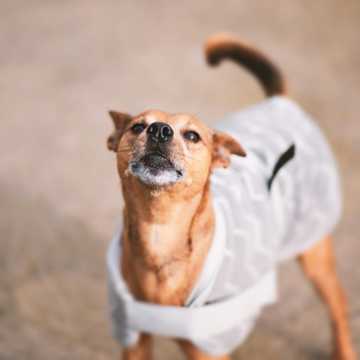
They apply mild pressure to a dog’s torso, deactivating its sympathetic nervous system. This system is responsible for kicking the fight-or-flight response in potentially dangerous situations.
Pressure stimulation is similar to swaddling a baby and is reported to benefit dogs with separation anxiety, travel anxiety, and similar issues. It helps the nervous system relax and rest.
How to Train a Dog to Help with Anxiety?
1. Use gentle exposure to reduce anxiety
Support your furry friend in overcoming their fears by slowly introducing them to the things that make them nervous – always in a controlled and calm environment. For instance, here's one of the easiest techniques to reframe their fear into a somewhat more manageable experience. If your pup is scared of certain noises, you can play a very quiet version of the scary sound while offering treats and calm encouragement. As your pup is getting more and more relaxed, you can gradually increase the intensity of that sound.
2. Create a secure space for your furry pal
Like their owners, pets need a designated area where they can calm down and recharge when stressed.

Here's what you can do: place a soft bed in a quiet corner of your home or a crate and provide their favorite toys for comfort. Limit their exposure to common stress triggers like loud sounds or unfamiliar visitors. A good idea is to get a special crate, like the Revol Dog Crate, as it can serve as a cozy hideaway, offering a sense of safety and stability.
3. Focus on encouraging calm behavior
Positive reinforcement is key to helping a nervous dog feel more secure. Whenever they behave in a relaxed or brave way, give your dog their yummy treats, affection, or a fun game. Direct their attention towards desirable actions instead of reacting to anxiety. Use high-value rewards, like favorite toys or treats, to reinforce training goals. Stick with it – repetition, patience, and consistency will help build their trust and confidence over time.
What Can I Give My Dog for Anxiety at Home?
Many pet owners opt for natural remedies when looking for solutions to calm an anxious dog at home. Though many lack scientific evidence, pet parents choose them due to their noninvasive nature. We recommend consulting your veterinary clinic first before starting alternative methods of treating anxiety in dogs.
Here’s a list of common natural remedies for anxious dogs:
- Essential oils (lavender, camomile)
- Natural herbs (valerian root, L-tryptophan)
- Calming supplements (melatonin, l-theanine)
- Natural supplements (like soft chews)
- Pheromones
Summary
Anxiety in dogs is a common condition many canines experience. Its symptoms can vary from physical signs of distress to escape attempts and destructive behavior. Since anxiety in dogs can decrease the life quality of both a pet and an owner, it’s crucial to address it as soon as you notice the symptoms.
Once you identify the most common causes of nervousness and restlessness in your dog, you can start treating them effectively. If you’re facing difficulties calming down an anxious dog, contact your vet or a certified dog training expert for further assistance.
